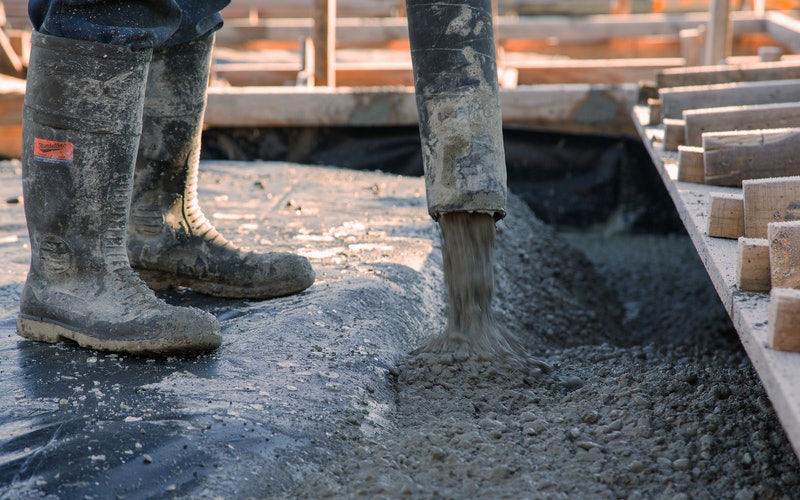Reinforcing concrete with steel fibres has been widely used in construction since 1970. They are used to add strength and reinforcement to concrete structures, particularly concrete slabs in flooring. Allow Smart Steels to discuss using steel fibres in concrete flooring construction.
Advantages of Steel Fibres
Steel fibres in Steel Fibre-reinforced Concrete are used as a more effective alternative to reinforcing bars of wire. There are numerous benefits to adding steel fibres to concrete in construction, rather than bars of wire.
First of all, rather than being positioned only in the required areas which are under the most pressure or stress, steel fibres are spread throughout a given cross-section of a concrete structure. Steel fibres are also distributed closer to one another than reinforcing bars of wire, which increases support to a structure.
Utilising steel fibre reinforcement in systems such as flooring is cheaper than other reinforcement methods.
Using steel fibres in flooring
The most common application for using steel fibres in Steel Fibre-reinforced Concrete is flooring construction. Where large flooring slabs are to be installed, the addition of joints can result in the flooring curling and cracking.
This is where steel fibre reinforced concrete is used to support the foundation of the flooring, without the use of constant joints. Joints and cracks in a floor can lead to future maintenance issues with flooring. Joints in flooring are important, as they expand and contract at different rates, which helps prevent the flooring from cracking.
Although useful, the joints in flooring begin to deteriorate over time. This results in lots of maintenance and costs. The fewer joints in flooring mean less maintenance is required. This is why steel fibres are used in concrete flooring structures, to increase the spacing between joints as well as the life of the flooring.
Different types of Steel Fibre
There are numerous types of steel fibres available for use in construction. These include:
cold-drawn wire
cut sheet
melt-extracted
mill cut
modified cold-drawn wire
Different types of steel fibre vary in tensile strength, fibre shape as well as the length of the fibre.
The cold drawn wire fibre is the strongest of the fibres. These fibres have a tensile strength of 145,000-445,000 pounds per square inch.
The longer the length of the steel fibre, the stronger the reinforced concrete tends to be. However, one disadvantage of longer fibres, is they tend to be more difficult to mix and blend into the concrete. This can be solved by using water-soluble glue to better disperse the fibres.
The diameter of the steel fibre compared to its length, also affects the reinforced concretes tensile strength. The longer the length of a steel fibre compared to its diameter, the stronger the tensile strength of the concrete structure.
Steel fibre dosages
Steel fibres can be added to concrete slabs at high dosage rates, without altering the finish of the concrete.
Only a low dosage of steel fibres are needed to add support to a concrete structure. With higher dosages, the addition of steel fibres to concrete has been seen to increase resistance to cracking, as well as reduce crack width. Steel fibres also reduce plastic shrinkage cracking.
There are a few variables which can affect the dosage of fibre added to a concrete mix. These include structural improvement, cost and joint spacing.
A concrete mix with a lower volume of steel fibres would require more flooring joints. A higher volume of steel fibres in a concrete mix allows for a larger distance between floor joints. This is more durable however more expensive.
Dosages can be measured through pounds of steel fibre, to pounds per cubic yard of concrete, which can also be listed as a percentage of volume.
Mixing and laying reinforced concrete
Once the dosage of the steel fibres has been decided, other important elements of the reinforced concrete including mixing and subgrade preparation.
If concrete mix distributions are correct, this results in stronger concrete. The mix contains an ideal combination of steel fibres, water and cement.
Steel fibres are usually added to a concrete mix using a conveyer belt, shortly after the cement and water.
The subgrade foundation should be well-drained and compact with a smooth, flat surface. A smooth, dry surface area is needed, to prevent the concrete slab from becoming stressed and cracking.


